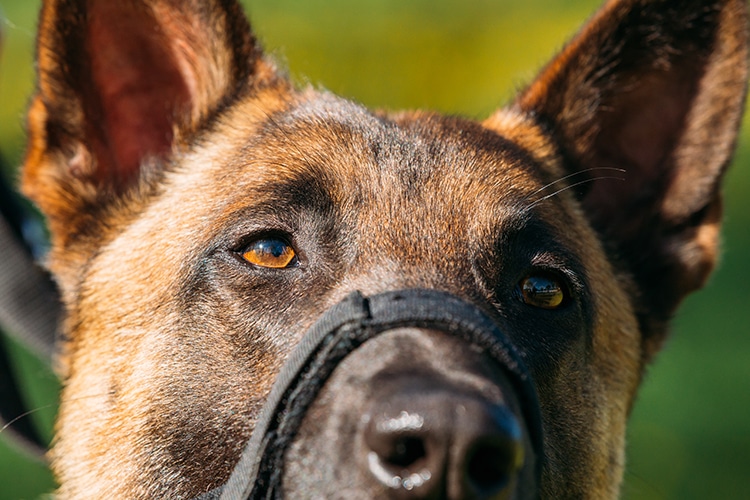We call our pups man’s best friend, and in so many ways it’s true. But dogs are still animals, and sometimes they can accidentally bite us. The city of Alexandria, VA defines a dog bite as, “any contact by a dog that results in broken skin, including puncture, bite or scratch.” While most injuries are minor, about 1 in 5 times dog bites need a doctor’s care.
Our goal in this article is to provide you with information that can help you be better prepared for unexpected accidents. To accomplish this, we’ll examine:
- Why Do Dogs Bite?
- Signs a Dog is About to Bite
- Dog Bite Statistics
- Dog Bite Infection: Symptoms, Treatment & Complications
- Diseases caused by dog bites
- Dog Bite Prevention
- Dog Bite Classifications
- Breeds with the Strongest Bite
- What to do if your dog bites someone?
- Dog bite insurance
- Dog bite ICD 10 codes
Even the calmest, most friendly dog can bite under the right circumstances. Fortunately, most pups will only resort to biting when they feel threatened or provoked in some way.
Canines will usually signal before they lash out at someone. That’s why learning how to read dog body language can help you prevent unwanted accidents. Fido may be getting ready to bite if you notice him
- Illness or Injury - When a pup is hurting or not feeling well, they can be more prone to lash out if you bother them or touch them in a sore spot.
- Possessiveness or Food Guarding - Some animals have a strong territorial sense and will guard food, a favorite toy, a litter of puppies, or a piece of property like a bed or sleeping area. This tendency is stronger in guarding and herding breeds.
- Fear - If Fido is in an unfamiliar setting that makes him feel fearful, he may try to protect himself by biting or snapping when strangers approach them.
- Startling - A furbaby might bite first and ask questions later if they’re startled or surprised. That’s why it’s important to not sneak up behind a dog or bother them when they’re sleeping.
- Prey or Herding Drive - Some dogs will chase you if they see you jogging or biking past them. They may even nip at you during play if you run away from them.
- Dog Fights - When two dogs are fighting, they’re prone to bite anyone who gets in the middle of the battle. You could risk serious injury if you try to break up a dog fight.
- The Summer Season - The NYC Department of Health and Mental Hygiene reported that more than half of the dog bites in 2013 happened during the summer season. Some reasons for this may include:
- Irritability due to higher heat and humidity
- More outings in unfamiliar settings
- More time spent among crowds of people
Canines will usually signal before they lash out at someone. That’s why learning how to read dog body language can help you prevent unwanted accidents. Fido may be getting ready to bite if you notice him
- pinning his ears back
- yawning or snarling to show his teeth
- standing rigidly
- raising the hair along his back
- growling
- showing the whites of his eyes
- raising his tail and wagging it slowly while standing still
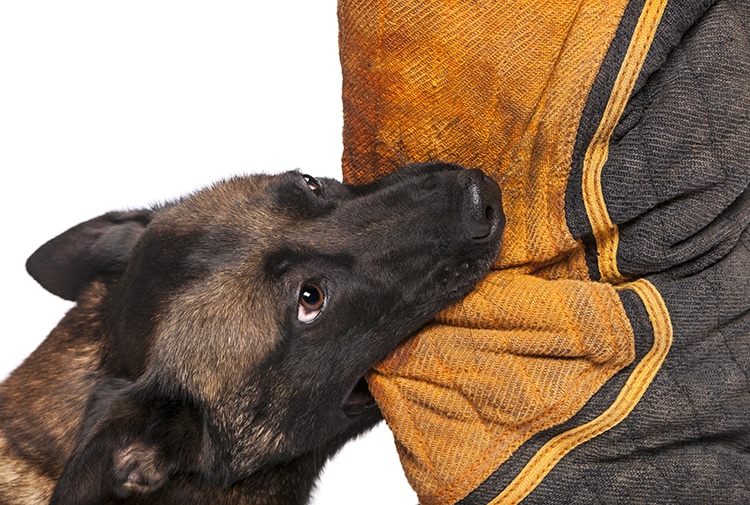
Statistics can help us answer important questions about dog bites like:
- What proportion of bites results in serious injury? death?
- Are some breeds more likely to bite?
- Are some people more likely to become bite victims?
Here’s some data that groups have collected about dog bites:
Dog Bite Fatalities
According to the National Canine Research Council,
- there are an estimated 4.5 million dog bites each year
- about 81% are minor in nature and require no medical care
- 18.99% of bite victims receive treatment without needing hospitalization
- 0.01% of dog bite injuries are serious enough to require a hospital stay
Dogsbite.org collects annual statistics about serious dog bites. There were 39 fatal dog attacks in 2017:
- Pit bulls caused 29 (74%) of the deaths
- German shepherds were responsible for 4 deaths
In 2018, there were 36 fatalities due to dog bites
- Pit bulls caused 26 (72%) of the deaths
- Mixed-breed dogs contributed to 3 deaths
In the 14 years from 2005-2018, dogs caused the death of 471 people in America
- Of these deaths, 311 or 66% of the deaths were from Pit bulls
- Pit bulls and rottweilers together were responsible for 76% of the total deaths
Serious Injuries
- CDC dog bite statistics from 2001-2003 showed about 4.5 million dog bites occurred each year and 885,000 were serious enough for the victims to seek medical attention.
- The Agency for Healthcare Research and Quality reported that there were 316,200 visits to the ER and 9,500 hospital stays due to dog bites in 2008.
- The cost of inpatient care for dog bite victims averaged $18,200
- Data from the American Society of Plastic Surgeons for 2015 demonstrates that over 28,000 patients had reconstructive surgery because of dog bites.
Statistics By Breed
In a study conducted on 433 dog bite fatalities in America from 2005-2017, the top 5 breeds cited were:
- Pit Bulls - responsible for 65% (284 deaths)
- Rottweilers - accounted for 10.4% (45 deaths)
- German Shepherds - caused 4.6% (20 deaths)
- American Bulldogs- responsible for 3.5% (15 deaths)
- Mastiff/Bullmastiffs - caused 3.2% (14 deaths)
Dogsbite.org also reports that when it comes to pit bulls:
- Surgical care following an attack is 3 times more likely to be necessary than with other breeds
- They were 2.5 times more likely to bite a person multiple times
- They were 31% more likely to attack an unknown person and 48% more likely to attack without being provoked
Demographics
Based on a review of emergency room data, from 2001-2016, statistics show that:
- 51% of dog bite victims are 0-12 years old.
- Children between the ages of 5 and 9 have the highest rate of dog bites.
- 77% of bite injuries in children under 10 involved the face.
- For adults, men are slightly more likely to be bitten than women.
- White, non-Hispanic Americans (3,051,877 injuries) are attacked more frequently than African Americans (596,725) or Hispanic Americans (402,774).
- Mail carriers in Chicago, Houston, and Los Angeles were at higher risk for dog bite injuries than people in other professions.
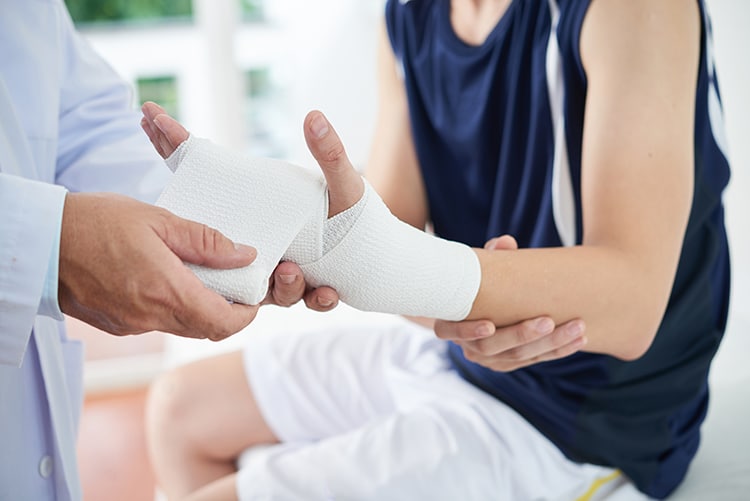
- Redness persists more than 24 hours after the initial trauma
- Swelling of the tissues around the wound
- Serous or pus discharge from the wound
- Warm and painful to the touch
- Swollen glands in armpits, under the chin, or in the groin
- Red streaks leading from the bite towards the heart
- Fever, sweats, or chills
If you notice these symptoms, contact your doctor immediately for treatment.
Treatment
If an unfamiliar dog bites you the first thing you want to do after making sure Fido is secured is to ask the owner about their pup’s vaccination history. It’s particularly important to know that the pooch is up-to-date on rabies vaccinations. Once you have that information, you can evaluate the wound and determine if you can take care of it yourself or you need medical attention.
Care for a Dog Bite at Home
Once you know that the pup is under control and won’t bite again you can attend to the wound.
Control bleeding – The first step is to control the bleeding.
- Use a clean dressing or cloth and apply gentle, firm pressure on the wound
- If possible, elevate the bitten area above your heart to slow blood supply
- 77% of bite injuries in children under 10 involved the face.
- Use pressure points to arrest blood flow to the wound
- DO NOT use a tourniquet unless the bleeding is severe and there’s no other way to stop it.
Wash the wound – Once bleeding stops, gently cleanse the area with soap and warm water. It’s okay to wash the insides of the bite area. Be sure to rinse all soap residue to prevent future irritation.
Apply a dressing – Cover the wound with a dry, clean bandage or dressing.
Monitor the wound – Check the area as it heals to watch for signs of infection.
When Should I Seek Medical Attention For a Bite Wound?
In the case of an otherwise minor bite, you should seek medical care if:
- You can’t remember when you had your last tetanus shot
- You don’t know if the dog that bit you is up to date on rabies vaccinations
- You see signs of an infection
- If the injury is severe or might require stitches
- If you suspect other damage like broken bones or tendon injuries
What Will a Doctor Do To Treat a Dog Bite Injury?
Any time that a dog bite penetrates the skin there’s a risk of infection. Therefore, it’s wise to call or visit your doctor. When you go in, a health care professional will likely:
- Clean and evaluate the injury and remove damaged tissue
- Close severe wounds with stitches or apply a bandage to minor bite injuries
- Take radiographs if a foreign body or deep tissue injury is suspected
- Recommend treatment for tetanus or rabies if indicated
- Refer you to a specialist if there’s extensive damage or a joint is involved
- Prescribe antibiotics to prevent infection
Antibiotics for treating dog bite infections
Infections are common following a dog bite because there’s bacteria in Fido’s mouth and saliva. Generally, the microbes associated with these injuries respond to antibiotic treatment with penicillins like amoxicillin.
Treatment for a penicillin-allergic patient
Adults that are allergic to penicillin and penicillin derivatives can be treated with cefuroxime or clindamycin and ciprofloxacin. For children, an acceptable alternative antibiotic course is cefuroxime or clindamycin and trimethoprim.
Complications
Whether the wound is minor or severe in nature, there are some possible complications that you need to know about:
- Wound infection - early care and treatment can help head off any infection from the bacteria in a dog’s mouth.
- Deep Tissue Injury - If Fido bites the hand or a child’s scalp or face, you may want to get radiographs to make sure there aren’t any broken bones or foreign bodies in the wound.
- Tetanus - Canine teeth can leave puncture wounds and carry environmental contaminants beneath the skin. This leaves the bite victim at risk for Tetanus.
- Rabies - A dog that’s infected with rabies may or may not show signs of the disease at the time of a bite. If you know the animal is current on his vaccinations, you can monitor them closely for a few weeks. Any time the status of the attacking dog is unknown, you should get a rabies shot to be safe.
When a dog bites you, you might get more than a skin wound. Canines can spread germs from bacteria and viruses in their mouths and saliva. According to the Center for Disease Control, up to 18% of dog bites may become infected. So what diseases can you get when a pup bites you?
Rabies
Rabies is probably the most serious disease that you can get from a dog. It comes from a virus that spreads through body fluids like saliva. The rabies virus attacks the brain and nervous tissue. Once a person shows signs of the disease, it is almost always fatal.
If you’re wondering, “Will I get rabies from a dog bite?” it is possible. The good news is that getting a rabies infection from a dog is rare in the United States. Most pups receive routine vaccinations. However, if there is any doubt, you can talk to your doctor about getting a rabies shot.
Capnocytophaga bacteria
This class of bacteria lives in dog’s mouths and is not dangerous to your pup. But it can be harmful to you. On rare occasion, the organism penetrates deep into a wound. For most people, this will cause a low-grade infection. However, individuals with a weak immune system may become severely ill.
Tetanus
Tetanus comes from the Clostridium tetani bacterium and is found in dirt and dust as well as dog’s mouths. Infection with this bacteria most commonly occurs with a puncture wound such as a dog bite. Untreated, it causes a rigid paralysis in the patient that can ultimately result in death.
Pasteurella bacteria
Pasteurella is the most common cause of dog bite infections. According the the CDC it accounts for over half of the cases. Usually, the bacteria causes a local infection with swelling and redness. If left untreated, however, it can spread to the lymph nodes and cause pneumonia or meningitis.
MSRA
Methicillin-resistant Staphylococcus aureus is a strain of bacteria that has a resistance to one class of antibiotics. Staphylococcus organisms exist on skin and in dog’s mouths. This strain is not terribly common, but it can lead to serious infections and illnesses if it gets in the bloodstream through a bite wound.
Zoonosis
A zoonoss or zoonotic disease is an infectious disease that animals are able to transmit to people. Under normal circumstances, dogs are a minimal zoonotic risk to humans. However, the chance of contracting an infection from Fido increases if someone has a weakened immune system, or if the offending organisms enter a person’s system through a dog bite.
Tips & Information for Parents

Without training and supervision, most children don’t know how to act around dogs. In addition, a youngster’s behavior can trigger aggressive actions in canines.
- Infants may trigger a dog’s predatory instincts
- When babies and toddlers become more mobile, their unsteady activity can spark anxiety in Fido. Pups might show aggression when your child crawls or toddles toward them.
- Young or pre-school children often move rapidly and unpredictably. They’re usually loud and impulsive. At this age, kids are more prone to grabbing or hugging Fido or disturbing him when he’s sleeping.
- In the case of older children, bite injuries are more likely to happen outside with unfamiliar dogs. Kids are more prone to approach a pup that they don’t know or to reach through a fence than adults.
Often toddlers and young kids don’t know how to read dog body language. What youngsters see as a bear hug or a playful tug can feel painful or threatening to Fido. He might express his pain or nervousness with his teeth. While there are no guarantees, taking some precautions around Fido can significantly reduce the chance of being bitten.
- Don’t let your child pet or play with an unfamiliar dog. Always supervise interaction between young children and dogs, even if it’s a pup you know well.
- Don’t let your child stick his face next to a dog’s face or head.
- Don’t let your child play with a dog when he’s eating.
- Teach your child they should never pull a dog’s tail.
- Don’t let your child approach a dog that’s on a chain.
- Tell your child to leave dogs alone if they seem to be sick or injured.
- Don’t let your child sleep with a dog and teach them to not startle or wake a dog that’s sleeping.
- Train and socialize your dog.
- Spay or neuter your dog to help minimize aggression.
Effect of a Short Educational Intervention for Preschool Children

It’s important to talk with your preschool-aged children about how to treat a dog. Kids don’t automatically know about canine behavior. Start at an early age by giving your child a few simple rules about dogs:
- Never hug a dog or kiss them on the face. Most pups don’t like face-to-face contact. Tell your kids they can scratch Fido’s chest or side of the neck instead.
- Never tease a dog.
- Always be gentle when touching or petting a dog.
- If a dog growls or moves away, they’re telling you that they want to be left alone.
- Be calm around dogs. If a pup tries to bite, back away slowly and try to put something between you and the pooch.
- Before trying to pet an unfamiliar dog, ask the owner’s permission. If you have permission, let Fido sniff your closed hand then pet him along the shoulder and chest.
Safety tips For Dog Owners
No matter how sweet and lovable your furbaby is, he can still bite given the right (or wrong) combination of circumstances. Fortunately, there are some things that you can do to help prevent the unthinkable.
You and Your Furbaby
- Do Your Research - Before you get a dog, talk to a dog breeder or veterinarian about breed characteristics and what would fit your family and lifestyle. If you’re getting a mature dog, arrange a time for the family to meet the pooch so you can see if he’s a good fit.
- Socialize Your Dog - One way to decrease the risk that Fido will bite is to introduce him to a variety of social settings when he’s young. If puppies meet people and other dogs, they’re more likely to feel comfortable in different settings when they’re older.
- Spend Time With Your Pal - Dogs are pack animals. Spend time with them to prevent anxiety and loneliness.
- Be a Responsible Owner - Do your part to keep your furbaby healthy. Provide good nutrition and regular exercise. Unless you have plans to breed your special pal, have them spayed or neutered. This can prevent aggression.
- Educate Your Kids - Teach your children how to behave around a dog. Teach them about dog body language and when to leave the pup alone. Refer to “How Can I Prevent Dog Bites in Children” above for more information.
Handling Dogs You Do Not Know
It’s not just your own four-footed friend that you need to be concerned about. What steps can you take to prevent unwanted encounters with another canine?
- Don’t approach an unfamiliar dog without the owner close by.
- Always ask the owner if it’s okay to pet their pooch. If you get permission, let the pup sniff you first.
- Don’t reach over or through a fence to pet a dog.
- Don’t panic or run away from a dog. Stand still and remain calm.
- Don’t approach a bitch with puppies if she’s acting nervous or protective.
- Don’t try to pet a dog that is growling, barking, or trying to get away from you.
- Don’t disturb a dog when it’s sleeping or eating.
- Don’t encourage aggressive play.
- Avoid staring at an unfamiliar dog.
- Don’t let children play with a dog unsupervised.
When communicating with health professionals and other people about dog bites, it’s helpful to have a classification system that standardizes the nature of the attack. Dr. Ian Dunbar developed a six-level scale to classify dog bites in a way that facilitates consistent and understandable discussions about these injuries.
Level 1
The dog acts aggressive or obnoxious but does not contact the skin with his teeth.
Level 2
The teeth contact the skin, but there are no puncture wounds. There may be surface nicks(less than 1/10 inch deep) and minimal bleeding.
Level 1 and 2 incidents comprise more than 99% of dog bites. These dogs are more likely fearful, overly excited, or out of control than they are dangerous. Owners should provide basic obedience training and conditioning to prevent further incidents.
Level 3
There is a single bite with no more than four puncture wounds. The punctures up to ½ the length of the dog’s canine teeth. There could be lacerations in one direction from pulling away from the dog or the owner pulling the dog off the person.
Fido’s prognosis with this type of bite is fair to good. Owners must be on board to provide bite-inhibition training. Treatment will take time and comes with some risk.
Level 4
There’s a single bite with one to four puncture wounds. At least one of the wounds is greater than half the length of the pup’s canine teeth. You may also see bruising or lacerations in two directions because the pooch clamped down or shook its head.
In this case, the dog lacks bite inhibition and is considered dangerous. Prognosis for the pooch is poor, and training should only be attempted under strict conditions and only if the owner is 100% committed to reconditioning their pup.
Level 5
This is an incident with either multiple bites or multiple attacks. In the case of multiple bites, at least two injuries must be level 4 bites. With multiple attacks, each incident must have at least one level 4 injury.
Level 6
The victim is dead.
These dogs are extremely dangerous and cannot be trusted around people. Dr. Dunbar recommends euthanasia in these cases.
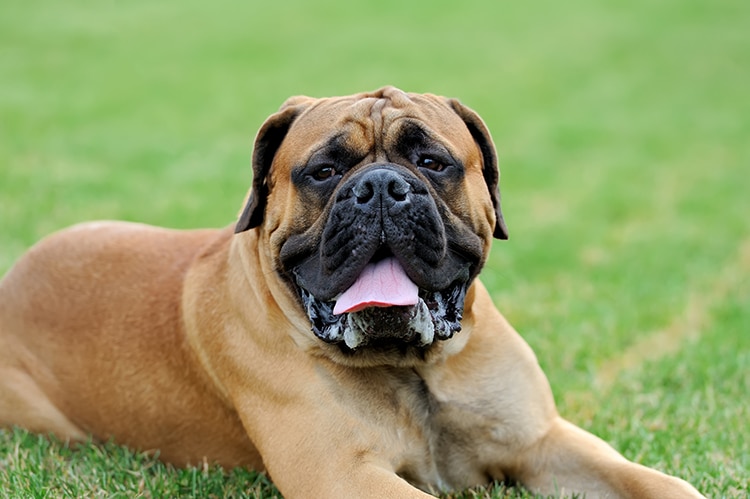
All dogs are not created equal. Some breeds have a much stronger bite force than others. Those that exert more force can go beyond a flesh wound and may break or crush bones. Scientists measure the bite force using PSI.
PSI stands for pounds per square inch, and it is a measure of how much force is exerted over one square inch of a pound. To give you a comparative idea of some forces:
- Most car tires are inflated to about 32-33 PSI
- Human bite force averages 120-140 PSI
- The Nike Crocodile has a bite force of 5,000 PSI
- An average dog has a bite force of about 230-250 PSI
Dog bite strength relies on a body size, skull size, and jaw shape. While many people may think of American Pit Bulls, Rottweilers, or German Shepherds as the most fearsome dogs, Mastiff breeds actually top the list for bite force. Let’s look at the top 10 dogs for strongest bite:
#10 Leonberger
Leonbergers are normally gentle family dogs, but they are enormous. If angered, their bite force can reach 399 PSI
#9 Wolfdog
A wolf-dog hybrid can be unpredictable in their behavior. They’re a cross between a domestic canine and a feral wolf. Their bite force can top out at 406 PSI
#8 Dogo Argentino
This breed from Argentina is a descendant of the Cordobra Fighting Dog. It is a hunting and guard dog with a maximum bite force of 500 PSI.
#7 Dogo Canerio
The Dogo Canerio hails from the Canary Islands and was a popular war and dog fighting pooch. It has a bite strength of 540 PSI.
#6 English Mastiff
Another war dog, today’s English Mastiff is a gentle giant and a good family dog. If you provoke them to bite, however, their bite force can be 556 PSI.
#5 Tosa Inu
In the early 20th century, breeders in Japan crossbred several European breeds to develop a formidable canine warrior. The resulting Tosa Inu is a loyal companion that has the ability to exert 556 PSI if it bites you.
#4 Dogue de Bordeaux
This normally laid back French Mastiff breed is usually calm, quiet, and good with kids. If you threaten or provoke it, however, its top bite force is 556 PSI.
#3 Cane Corso
The fearless Cane Corso from Italy once served as a sentry and attack dog. They can be affectionate to their family members but may be overprotective. Their bite strength can reach 700 PSI.
#2 American Bandogge
Not a recognized breed by the American Kennel Club, the “Bandog” refers to a muscular crossbreed of ancient Greek dogs known as Molossers. These were war and guarding canines, and they have a top bite force of 730 PSI.
#1 Kangal
The Kangal is a Turkish guard dog known for gentleness, loyalty, and protectiveness. Their bite strength wins the title with 743 PSI.
This happened in our household about 8 years ago. My husband was coming home from an early morning walk with our Springer-lab mix when the paper delivery person was cutting across our lawn. He was in front of our baby daughter’s window when our furbaby saw him and perceived him as a threat. The young man waved a rolled newspaper in front of her, and she lunged and bit him on the leg. Fortunately, this was the only time she ever bit anyone, and she was up to date on her rabies vaccinations. What did we do, and what should you do?
It’s important to stay calm and get control of the situation. If you take immediate action, you can help diffuse a tense situation and avoid liability. Here are steps you can take if Fido bites someone.
- Regain Control of Your Pup - If you’re in your home, put Fido in his crate or a separate room. On a walk you can use the leash or harness to restrain your pooch and separate him from the victim.
- Offer First Aid Assistance - Depending on the severity of the injury, you may be able to cleanse and bandage the wound. Otherwise, offer to contact the person’s doctor or get them to a treatment facility such as urgent care.
- Exchange Contact Information - Give the person your contact information and get theirs. If there are any witnesses, make sure you get their information as well. You may also want to provide information on your homeowner’s or renter’s policy.
- Report the Incident - You should be the one to call the authorities. Collect your pup’s vaccination records and medical records. Follow their instructions. Laws in different states and municipalities laws can vary.
- Consider Consulting an Attorney- As a precaution, you may want to speak with a lawyer in case the victim or animal control pursues legal action against you and your pooch.
- Take Preventative Measures for the Future - Once your pal bites a person, you need to think of your pup as potentially dangerous. Consider contacting an animal behavioral specialist to learn how to prevent future aggression.
If My Dog Bites Someone, Will I Have to Put It Down?
Not necessarily. It will depend on the laws in your area and your pup’s past history. In our pooch’s case, she had no past history of aggression. The laws in our area required that we keep her under house and yard quarantine and observe her closely for 10 days. This was to confirm that she was not transmitting the rabies virus at the time of the bite.
If your pup has no history of aggression, many localities will quarantine the dog either at your home or a state facility. If it is a second offense, Fido may be placed on a dangerous dog list. With repeated attacks or bites, the state will require euthanization.

How can you protect yourself if your furbaby bites someone and the victim seeks legal damages? Will you need dog bite insurance? In many cases, your pup’s actions may be covered by your homeowner’s or renter’s insurance. Personal liability clauses often include protection in the event your pup bites a person or damages their property. There are exceptions for some high-risk breeds like pit bulls. You may also encounter a higher premium if your pooch has a history of biting. To be sure of your coverage, let your insurance agent know about your furbaby’s history and breed.
When Fido bites someone and medical care is needed, the doctor will enter an ICD 10 code for insurance purposes. Public health officials use the same system if they are involved.
ICD 10 stands for International Statistical Classification of Diseases and Related Health Problems 10th Revision which is published by the World Health Organization. The codes are alphanumeric combinations of 3-7 characters. They’re used to describe a specific diagnosis for a(n).
- Disease
- Disorder
- Injury
- Infection
- Symptom
In the code, the first three characters specify the category of the condition. For example, contact with a dog codes is W54. The next three characters indicate the anatomical location and severity of the condition along with other clinical information. The final character is an extension that indicates if this is an initial event, a recurrence, or a complication.
ICD 10 Codes for Dog Bites
In the case of dog bites, the ICD 10 codes are as follows:
- W54.0 is biten by dog
- W54.1 is struck by dog
- W54.8 is other contact with a dog
Final Thoughts
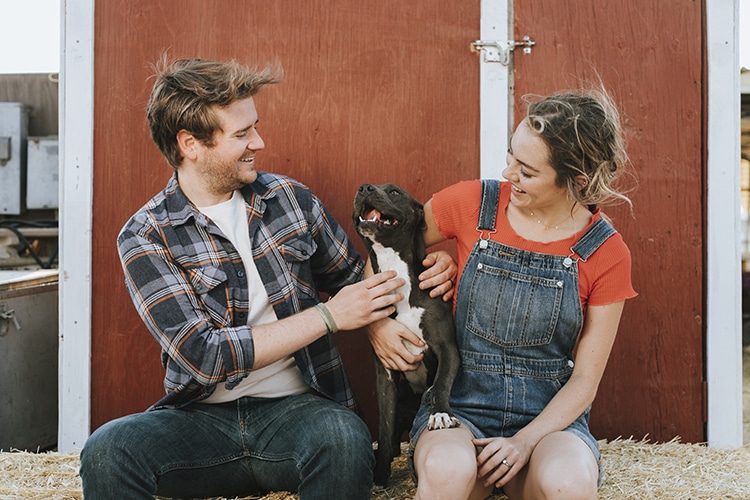
In the case of dog bites, it’s good to follow the Boy Scout motto, “Always be prepared.” Nobody wants to think about injuries from canines. That’s why knowing how to respond after an attack and what you can do to prevent one in the first place is important. Hopefully, with education and proactivity we can keep both dog and man safe.

